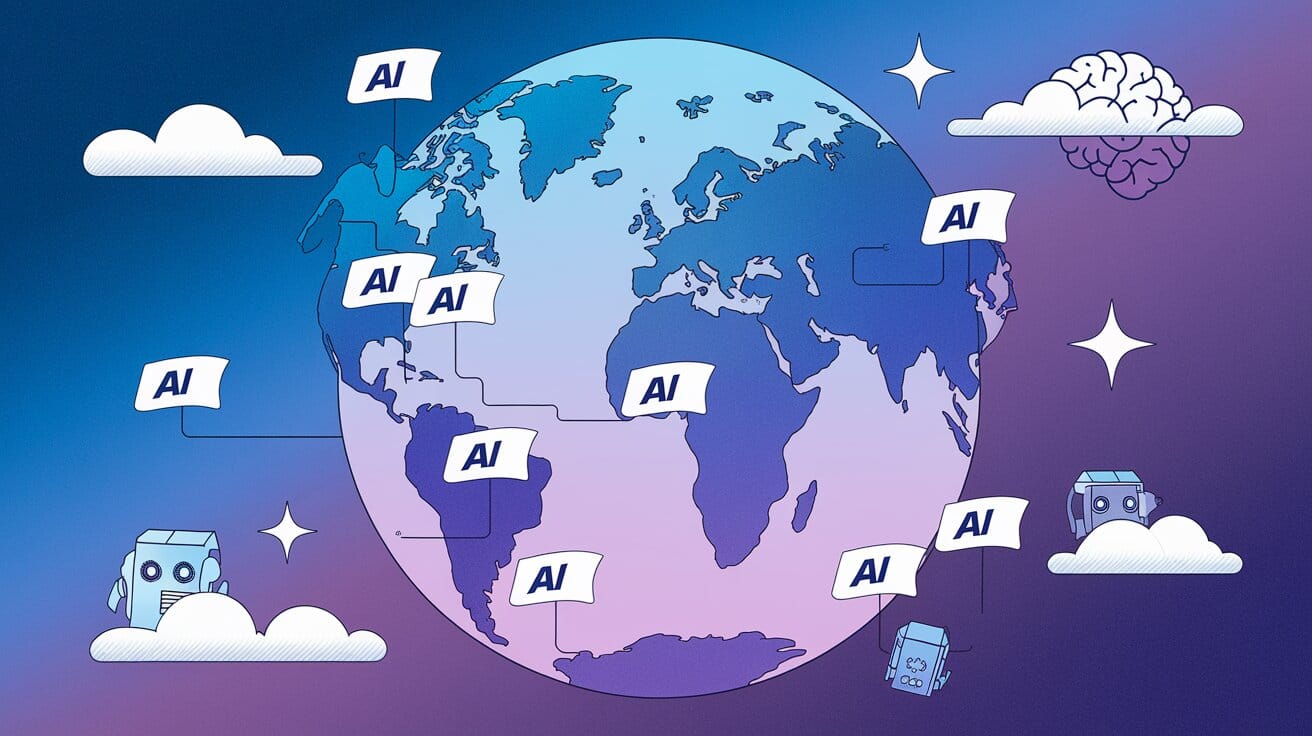

Are you ready to disrupt with AI? Join our Hackathon today! Click to Register
By WebOsmotic Team | Published on January 27, 2025
Summarize Article

Table of Contents
ToggleArtificial intelligence will change industries, economies, and societies with opportunities and risks that proper regulation must address. AI has emerged as one of the bricks in the rules for most countries. This is now trying to grapple with the wider implications it is creating. AI regulations are continuously evolving and are modeled after each country’s unique circumstances about AI. They will create global principles for future ethical, fair, and safe deployment of AI technologies. This article looks into the world landscape of AI regulation, including challenges, from AI regulations in India to trends that point to global AI regulations 2025.
There is an undeniable potential for transformation through AI. However, as it promises to bring many grand changes, it also creates challenges. These include:
Countries and entities are framing measures for AI governance:
| Country/Entity | Rules and Regulations |
|---|---|
| European Union (EU) | – AI Act classifies AI into 3 risk levels: Unacceptable, High, Minimal. – Concerns: Data quality, transparency, and human supervision. |
| United States | – AI policies are managed separately by federal and state levels. – Blueprint for an AI Bill of Rights protects citizens. |
| China | – Focuses on security and supporting state goals. – Key rules include data use, transparent algorithms, and ethics. |
| India | – Building AI regulations to balance innovation and prevent misuse. – National AI Strategy supports ethics, inclusion, and collaboration. |
| Global Cooperation | – Groups like OECD and UN work on global AI ethics rules. – Collaboration is key since AI impacts the whole world. |
Indian art with new regulations is slowly enhancing innovation through ethicality:
| Focus Area | Rules and Regulations |
|---|---|
| National AI Strategy | – Called #AIforAll, focuses on healthcare, farming, education, and cities. – Promotes fair, bias-free, and inclusive AI. |
| Data Protection Laws | – Based on the Digital Personal Data Protection Bill. – Ensures privacy, consent, and transparency. |
| Specific Regulations | – AI in healthcare and finance follows sector-specific rules. |
Artificial Intelligence (AI) laws set up a rather strong framework but also one that would be able to lend and bolster innovation while also standing a fair chance for ethical, safe, and responsible applications. The laws are drawn to strike a fine balance between innovation and accountability by separating the individual and social levels from potential hazards. Here’s an idea of AI laws:
AI systems should be designed to function transparently with clear descriptions of how decisions are made. For building trust among users and stakeholders, AI must be unbiased and just.
Artificial intelligence laws control the collection, storage, and other similar data-related uses implemented to conform with the established privacy standards and data protection rules. These reduce the actual misuse, preventing such aggregation-sensitive data from unnecessary exposure.
The designers and operators of artificial intelligence are eventually liable for all the decisions made by it. This also includes liability for mistakes, inconsequential outcomes, or taking effects from the usage of artificial intelligence.
Laws concerning AI are a reference to the protection of the systems from application abuse, such as cyberattacks in general. There should be very strong security measures to mitigate exposures to malicious use by the wrong hands.
Several challenges face AI regulation despite improvements:
AI Ethics Boards: Internal boards are being formed in companies to render effective oversight over ethical practices in AI.
Public-Private Partnerships: Partnership between government and industry in the development of effective policies.
AI Certification: Certifying AI Systems by safety and ethical standards.
Focus on Human Rights: With increasing frequency regulations encroach upon one or another fundamental rights envisioned under various general and special legislation.
Regulatory sandboxes are now being used as a tool for managing and controlling AI affairs. Such enclosed environments allow organizations to test applied AI systems under strict regulation, rather than at the expense of safety or ethics. It provides a platform that achieves a balance of oversight with experimentation. Sandboxing supports responsible AI development and prepares systems for actual applications.
The journey toward full-fledged AI regulation is difficult but necessary. Countries all around the world have specific laws governing the use of AI on different continents. The Artificial Intelligence Act of Europe, for example, offers a framework through which countries like India can model their AI laws. Every country is now trying to find the right balance between supporting innovation and ensuring safety.
As we close on global AI regulations in 2025, international collaboration and adaptive policy will be the key to unleashing the full potential of AI while mitigating risks. Addressing ethical issues, ensuring transparency, and creating accountability will help the world to achieve all the complexities of AI.
Make this 2025 elevate with AI regulations. Collaborate with WebOsmotic today!
Unlock exclusive insights and expert knowledge delivered straight to your inbox